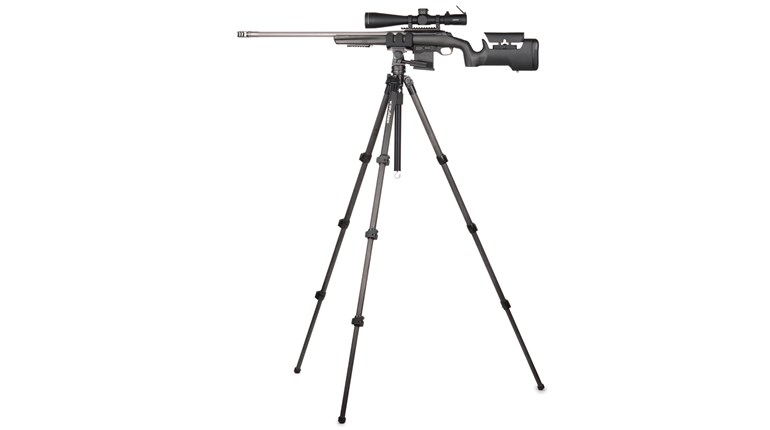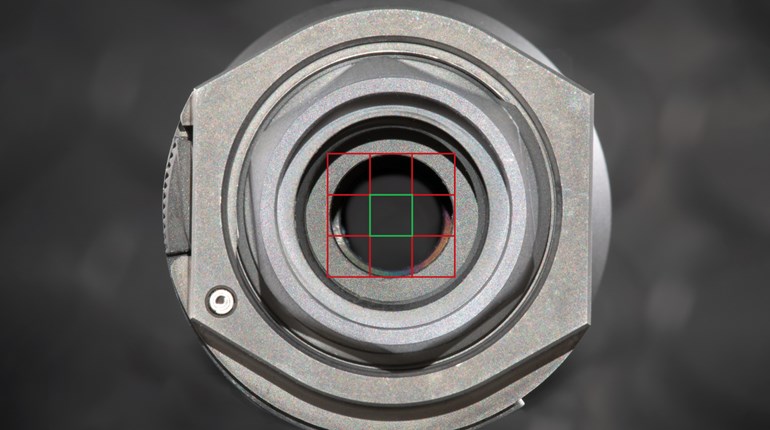
There are few gun-design topics that get me fired up. The location of a semi-automatic rifle’s charging handle is definitely not one of them. For some reason this debate pops up from time to time, especially in comments posted online, where erratic opinions fly like battered brass from a fluted H&K chamber. It appears rifle shooters tend to be strongly for one charging-handle design and against most others, so the topic is at least worthy of examination.
Long before low-profile, forward-folding levers or rear-mounted charging handles became normal, most semi- (and full-) automatic rifles had cocking handles that protruded from one side of their receivers. The placement was logical, since rifle shooters of the early 20th century were already working the levers and bolts of manual repeaters, and some early semi- automatic conversions used existing bolt-action designs.
When attached to bolt assemblies or operating rods, side-mounted charging handles tend to reciprocate during their cycles of action. Well-known examples from our side of the Atlantic include the M1 Garand, M1 Carbine and M14/M1A variations. Common mid-century longarms from across the pond that reciprocated include the widely distributed SKS and AK rifles, as well as many firearm designs that borrowed heavily from the AK. Our allies’ FAL and G3 variants employed non-reciprocating side chargers that locked in their forward-most positions.
Today’s options are heavy on the non- reciprocating, rear-mounted, charging- handle side thanks to the widespread popularity of the AR platform. But, Eugene Stoner’s original AR cocking lever was positioned inside of the receiver-mounted carrying handle, which gave it the appearance of an upside-down trigger.
Later commercial and military versions saw the AR’s charger moved to its present location at the rear of the upper receiver. This non-captive charging handle locks forward by way of a manual latch to prevent smacking the shooter’s face. Whether due to military familiarity with the bolt-assist capability of M14 charging handles or stemming from functional problems with the first widely issued guns in Vietnam, the M16 gained its now-familiar, forward-assist button on the receiver’s right side as part of the “A1” upgrade in the late 1960s.
Semi-automatics designed in the intervening years, such as the FN SCAR, Bushmaster ACR, Beretta ARX and most bullpups, retain side chargers. Some of these handles reciprocate, while others remain locked forward. Those side-chargers that do not move while their actions cycle often have a provision to assist in fully closing the bolt—usually achieved by pushing the knob or handle inward while driving the bolt forward.
A modern adaptation for the AR uses either a purpose-built, side-charging upper receiver, or an existing upper receiver and bolt carrier that have been modified to allow use of a side-cocking handle. I am not a big fan of the latter because I do not like to compromise the integrity of an upper receiver that was not originally designed with a slot down the side, but that is a personal hang-up and many shooters are happy with their modified AR uppers. Of the many purpose-built, side-charging AR receivers I have used over the years, all have performed quite well.
If you look closely, you can find flaws in any design, and no exceptions are to be found here. The chief gripe with reciprocating charging handles is when that side of the action is fired close to the edge of a barrier, corner or even web-gear, the handle may snag and cause a stoppage. Even a non-reciprocating handle can get hung on a window frame, door edge, barrier or personal gear; taking the bolt out of battery in the process.
This is certainly possible and has likely happened at critical times in gunfights over the past hundred-plus years. However, I cannot find any anecdotal or after-action evidence that side charger-induced malfunctions are or were ever a common occurrence. If you carry a rifle with a side charger, you learn really quickly to keep the cocking piece away from objects and body parts while shooting. Several generations of American hunters and G.I.s managed to do just that throughout the 20th century.
AR charging handles have their own issues. Their high/rear upper-receiver location forces a shooter to reach up in a way that is only natural to people who grew up shooting ARs. They are also prone to bending if torqued up or to the side while retracted, or when used to try to unstick a bolt carrier that is hung up. Once bent, the charging handle can easily disable the rifle. Another complaint derives from the space where the handle protrudes from the upper receiver, allowing gas to blow into the shooter’s face. That situation gets much worse with a sound suppressor attached.
Non-reciprocating, side-charging-handle assemblies that ride in tracks on the side of their receivers can also bend enough to prevent those handles from moving in either direction. Forward-mounted side chargers require the shooter to release the support hand in order to manually cycle the rifle’s action, leaving a bunch of unsupported weight hanging out there. That setup is particularly awkward if you are trying to deal with a serious malfunction. To smoothly operate an opposite-side, forward-folding charger, we southpaws require a level of flexibility not normally encountered outside of the circus.
Even so, I consider myself “chargebidextrous.” As long as I can reach my rifle’s charging handle without coming fully out of position and it works as designed, I do not really care where it is. I started my semi- automatic life as a teen, shooting right-side-charged Ruger 10/22s and M1 Carbines. I spent the ensuing 22 years using Army-issued, rear- charging ARs. During that span, I also used just about every commonly encountered, semi-automatic rifle/Carbine/SBR from around the world at one time or another.
I even set aside my ARs to carry side-charging semi-automatics on three of my overseas tours—but not because of the charging handles. Those rifles had other attributes I needed. Today, I own examples of each charging system—top, rear, left-side, right-side, reciprocating and non-reciprocating. I like some better than others, but I am not going to get my undies in a bunch if I happen to have the “wrong” one in a moment of urgency. I will leave the hand-wringing to the Twitter trolls and forum experts.



































